
Sign in
Don't have an account with us? Sign up using the form below and get some free bonuses!

The Highly Sensitive Person (HSP) may be relatively new as a namesake, but it's certainly not new as many people's reality. Some of us are just wired differently than others, be it from nature or nurture (although in this case, science argues for both).
With our sensitive wiring in mind, those of us who become parents need to learn parenting strategies that are not only effective, but also keep us from feeling overwhelmed by our children--the very people whose care has been entrusted to us.
Personally, I know the HSP life well. I'm the daughter of a highly sensitive person. I, myself, am an HSP. And now, I have little one of my own. I write this based on years of research as well as from my own experience. In other words, I "get it."
My hope is that my research will help the HSP parent find greater peace in their parenting strategies.
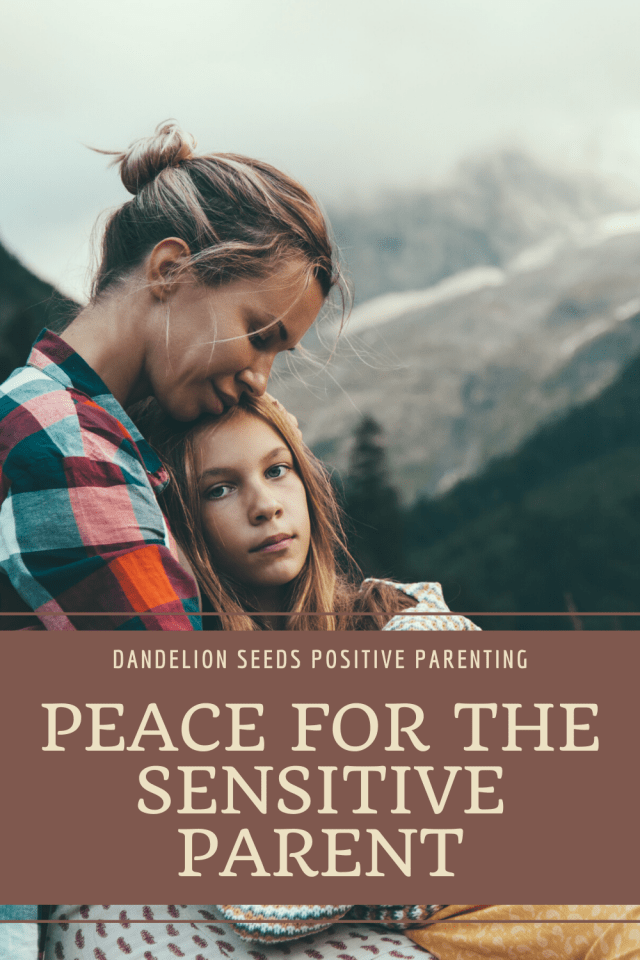
In short, MRIs show that the HSP has a nervous system that works differently than that of the other 75 to 80 percent of the population. However, HSP traits don't necessarily manifest the same across the remaining 15 to 20 percent of the population that we comprise.
What science does demonstrate across the board for the HSP, however, is that our MRIs show distinctly different areas of brain activity versus non-HSPs in response to the same stimuli. Specifically, the MRIs show "stronger activation of brain regions involved in awareness, empathy, and self-other processing" (source).
As a result, HSPs can experience the same events entirely differently from non-HSPs. And empathic HSPs take their innate sensitivity a notch farther.
That said, there are a couple of concepts worth noting before addressing parenting strategies: "Highly sensitive people are typically introverts, while empaths can be introverts or extroverts (although most are introverts). Empaths share a highly sensitive person's love of nature and quiet environments, their desire to help others, and their rich inner life." (source)
We can use what we know to our advantage.
While mainstream parenting is, well, mainstream, we simply aren't. Therefore, we can't expect that standard parenting strategies would work well for us. If we try to fit into a certain "box" that doesn't reflect our sensitive nature, parenting might feel harder than it has to be.
Some of these ideas can lighten your load.
Many of us have what feels like a whole lot of extra neurons dedicated to empathy. And HSPs, following a standard rote of discipline that leaves us feeling disconnected from our children simply isn't a good fit.
Parent gently. This includes "parenting" yourself, too. Be kind to yourself and keep your inner (and outer) voice in check.
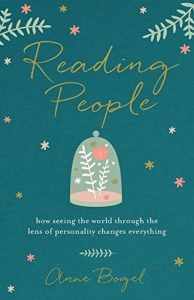
If HSP parents treat our children harshly, many of us will internalize the punishment and feel it ourselves on some level. If our parents were harsh with us or ignored our big feelings and we have emotional memories of that, we'll feel those feelings all over again as we administer them in our own homes. That doesn't feel good.
Of course, children do need loving limits. With practice, we can hold those loving limits compassionately with our children while also healing your own inner child.
If you're new to gentle parenting or want to learn about it in ways that support the information in the books, many positive parenting groups exist to support you. Support from likeminded parents can help you navigate to a gentler way of being.
Release the pressure to discipline the way our parents did, or our peers did, or the way some outdated parenting book said we should.
Trust your sensitivity to be your ally and your guide.
We all know we can't pour from an empty cup. We'd like to be able to take care of ourselves first. However, some HSPs find it challenging to find parenting strategies that balance self-care and our tendency to put others first.
For me, taking care of myself first just wasn't always my reality. When my child was very little, I couldn't just let her cry and "figure it out," no matter how exhausted I was. Despite the well-meaning (albeit unsolicited) advice from others, I let my heart lead my parenting.
I'd felt better if I'd parented lovingly and while being emotionally present for my child day and night.
Does that mean that I just abandoned my needs, though? Absolutely not. Something that worked really well for my family included reducing screen time and replacing it with story time. We also instituted screen-free days with unexpectedly positive results. That wouldn't work for everyone, of course, but I knew I needed my quiet time to recharge.
So, I created the best of both worlds: quiet and clutter-free areas around the house where I could go to read with (or near) her while still staying emotionally present.
I also made mornings our standard time to get out of the house. That way, I knew I could come home and everything would be quieter from that point forward in our day. Afternoons became a predictably sacred space for us.
"Home days" earned just as much priority as other appointments. I consciously worked to find the patience for positive parenting, knowing that practice would make our inner lives more peaceful. If I couldn't "go" to self-care, I brought peace to meet me where I was.
Many HSPs grew up keenly aware of their sensitivities to sounds, bright lights, and overly gregarious people. Whatever external stimuli triggered you before having kids, they're likely still there, along with the responsibility to raise children despite them. And in many cases, kids are all the noise, lights, and excitement wrapped up into little human-sized packages of energy. That's standard child behavior.
That said, this is in no way a knock on children. They're perfectly good at being exactly who they were designed to be, lights and all. Life moves on, as they say, but becoming a parent doesn't mean you're not yourself anymore. Suddenly, you're responsible for raising a human who might challenge all of your HSP-ness.
Remember how you grounded yourself before you had children. What's something you haven't done in so long that you've nearly forgotten about it, but that helped you find peace?
Consider journaling as a way to reconnect with yourself. It's proven to be a solid and reliable way to express

our own big feelings and working through them peacefully (source).
If you have an understanding partner, share your heart with them. A friend or a counselor can be a wonderful resource for an HSP, as well.
If you don't have a good circle of friends, create your community -- start somewhere. If you lack childcare or the desire to leave the house, connecting virtually can still lift you up. A video or phone chat with a faraway friend does wonders for refueling the emotional tank.
Within certain parameters, even social media can offer some benefits specifically for introverts, including the HSP. Connecting with other adults is easy to overlook because many don't consider it a "parenting strategy." However, connection is critical to our emotional wellbeing.
Connection, in turn, contributes to the emotional fuel we have on reserve for the challenging parenting days---and for all of the regular days, too. If social media starts to creep in too intrusively and negatively affect your relationships, however, know that there are many things you can do to keep your screen time in check.
Finally, not all connection needs to be with people. Connect spiritually. Connect with nature, too -- science shows how beneficial it can be for grounding ourselves (source).
Rather than trying to fit into a mainstream mould that wasn't built for us in the first place, we get to create our own parenting strategies that honor who we are. We can create an approach that  leaves us feeling encouraged and connected, even despite all the ways that parenting stretches us and pushes our boundaries.
leaves us feeling encouraged and connected, even despite all the ways that parenting stretches us and pushes our boundaries.
With the natural bigheartedness of HSPs, our children will fare better when we embrace that which comes naturally to us. There's always room for more compassion in the world.
There are a few really detailed and exceptionally good books to study, such as The Highly Sensitive Person by Elaine Aron, PhD, and Reading People by Anne Bogel (the latter is only a chapter, but it's entirely relevant). I 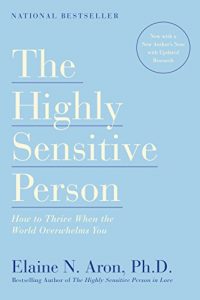 recommend them to HSPs who want to understand themselves better. They're also beneficial to non-HSPs who want to understand us better.
recommend them to HSPs who want to understand themselves better. They're also beneficial to non-HSPs who want to understand us better.
You can watch a movie about highly sensitive people. You can even take a online quizzes to gauge whether you're a likely an HSP. If you've read this far, though, you probably already know the answer.
I didn't need a quiz or an HSP "label" to understand my own wiring, but it didn't hurt to know what to call it so that I could research beneficial parenting strategies more effectively.
With or without a quiz, if you understand yourself to be an HSP and want parenting strategies that support you, check back here for more resources soon -- including an online session dedicated to parenting a highly sensitive child.
When my daughter was three years old, I didn't think anything about fostering childhood resilience when it came to Halloween. For some reason that's unbeknownst to me, she decided that what people do with Halloween candy is...donate it. Who was I to argue with her thoughtful idea? So, for the past two years, we've gathered up her loot and handed it off to a grateful recipient.
I somehow assumed that this is what she'd want to do with it forever. Yeah, just call me naive and we'll get on with things, shall we? In any case, we started Halloween today with our standard plan to donate her candy. She was completely on board.
So, off we went to our downtown "Safe Halloween" where local businesses open their doors to the kids and their parents for a couple of hours, doling out all the good stuff. Now, what makes the "good stuff" tricky for us is that my kiddo has food allergies, so donating her candy has always eliminated any risk to her safety. The Teal Pumpkin Project helps somewhat, but not everyone knows about it or chooses to participate.
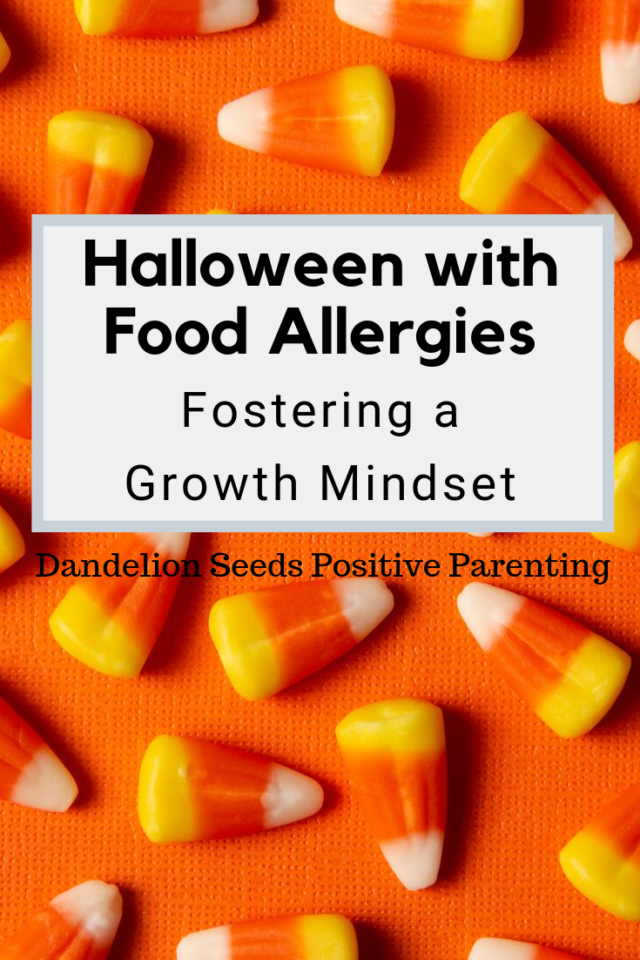
When we were done trick-or-treating, however, she crawled into the backseat of my car, opened her big paper bag, and took a quick whiff of the contents of the sugar-filled booty. I glanced back at her after another minute, and although her hands were still on the outside, her head had disappeared almost entirely into the bag. It smelled good. That's when I started to realize that this year might be
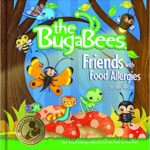
different. She might not want to donate the good smells.
When we got home, she inquired while holding up one of her goodies, "Mommy, can you please read the ingredients to this one?" Suddenly, I realized we were on a very slippery slope. What had been an easy fix to a problem wasn't going to work this year. Since reading The Bugabees (which I love for kids with food allergies), she's learned to ask what's in the food to which she's exposed. (Afflink) That's wonderful.
For better or worse, however, most commercial candies simply aren't options for her health-wise. To compensate for that, we have alternate "safe" treats at our house, usually healthy options. She'd broken off a square of dark chocolate during lunch at home just a few hours earlier as a special treat.
With all that in mind, I read the ingredients. She quickly self-identified that the candy she chose wouldn't work for her. And then she mourned.

Empathizing, I told her, "I saw how much you really wanted that candy. The feelings I'm guessing you have right now are disappointment and sadness. You can tell me if I'm wrong." It helps kids to give names to feelings to help build emotional intelligence. Dr. John Gottman writes about this, along with a lot of other really insightful suggestions, in this book. It's best when children can name the emotions themselves, but that doesn't always work when they're emotionally flooded. She agreed that I'd guessed correctly.
After holding her and telling her I understood (truly, I do), I realized that this would be another teachable moment. I had to wait, of course, until her brain could find logic and reason, as this important book by Drs. Seigel and Bryson so clearly illustrates. One of the lessons I've learned, though, is that she learns best
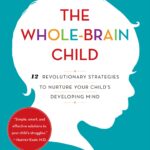
when I give her the space to solve problems for herself--while I fully support her emotionally along the way. This is a life skill she needs.
Knowing the rest of her loot would be similar, I offered, "I wonder what we could do to make the rest of the candy less tempting. Let's think about this." And then I waited, just a bit longer than where I felt comfortable. It's usually in that uncomfortable moment when she suggests something.
"I have an idea, Mommy."
"What is it?"
"Let's make it a science experiment. You grab a bowl and put some hot water in it; I'll put the candy in it and see what happens."
We proceeded to make a warm, gooey, good-smelling experiment while sitting in the middle of our kitchen floor. I hadn't thought of the idea. She had. And when she did, she bought in completely. We marveled at which ones floated or sank, and which ones bubbled (I'm never eating that kind again). She solved the problem in a way that will undoubtedly stay with her much longer than anything I'd have suggested, would have. And I believe she learned something about her own resilience.
Although I don't know if this candy-plan will work again next year, what I do know is this: she's capable of figuring it out. She's strong. I love that she has opportunities to see this.
_______________________________________________________
Click the images for details!






Many kids have an inherent panic response when Mom or Dad starts counting, "1...2...3..."---the three most fearsome numbers of childhood. Although the consequences differ from household to household, counting is often code for imminent trouble. Peaceful, positive parenting can change that. Rather than counting to three as a threat (suggesting punishment that's rarely effective anyway), counting can be a useful parenting tool for you. Here's how.
For those brief seconds, recall a tender moment when your little one was a baby. Remember the feeling of those tiny fingers wrapped around yours. Alternatively, imagine your "baby" being older and moving out of your home. Picturing either extreme will automatically ground you and help you remember how fleeting this moment is. Part of positive parenting can include using mindfulness techniques like this one.

Does that mean you agree to every request or throw your boundaries out the window? Of course not. However, you can reevaluate whether you can say yes more often (you'll find some practical ideas of how to do that here).
Walking past a playground recently on our way somewhere else, my daughter wanted to stop and swing on the swings. We really didn't have time. I could tell by looking at her, though, that it was important to her. So, I said, "Yes, you may swing for three seconds before we keep walking. I'll start counting as soon as you get on the swing, and when I get to three, it'll be time to go." She agreed.

She shed no tears; she didn't negotiate for more time (aside from my agreeing that it was reasonable for her swing to slow down before she hopped off). Part of her lack of desire to negotiate in situations like this is that she's learned she'll often get a "yes"---even if just a brief one.
These little "yeses" can go so far in supporting connection with your child. Some might argue that their child wouldn't get off the swing so easily, but I wonder if they'd consider the time they'd lose in managing their child's disappointment, and the missed opportunity to connect.
It's easy to say yes more often once you practice, and once you build trust with your child that it's what your answer will often be. The "forbidden fruit" they're seeking will feel less forbidden, and therefore be less of a draw, if they feel you're on their side.
This approach also makes your parenting approach easier for your kids because they learn when "no" really needs to happen. They trust it's not arbitrary.
In our house when my child was younger, this "counting to three" took the form of "Would you like to go put on your shoes now, or would you like me to hold you while I count to three so you'll have some time to prepare?" It worked amazingly well. It's as if my child really needed that count of three to ready herself for whatever was coming next, even if the task was as mundane (in adult eyes) as brushing teeth or walking to the car.
Three seconds to adjust is often just enough time to connect and make the transition easier for both of you.
It can be a "yes space" for both of you, child and parent, where you ground yourselves for a better interaction and greater connection. And it can be as easy as 1, 2...well, you know.
Go here to find more of our favorite positive parenting books. As an Amazon Associate, we earn from qualifying purchases. Your purchases help us support important charities.
Teaching children how to protect the Earth often isn't at the forefront of our minds. We recycle, of course, and we're generally good citizens. In all practicality, however, we're often busy...making lunch. Managing our children's bedtimes. Living life.
I don't write that judgmentally. I'm guilty of it, too.
As part of conscious parenting, however, it's imperative that we do teach kids why we need to protect the Earth. Conscious parenting and salvaging what we can of the planet aren't mutually exclusive. We have a moral obligation to not only teach children how to be kind to other humans, but also to show them how to nurture the global home they share.
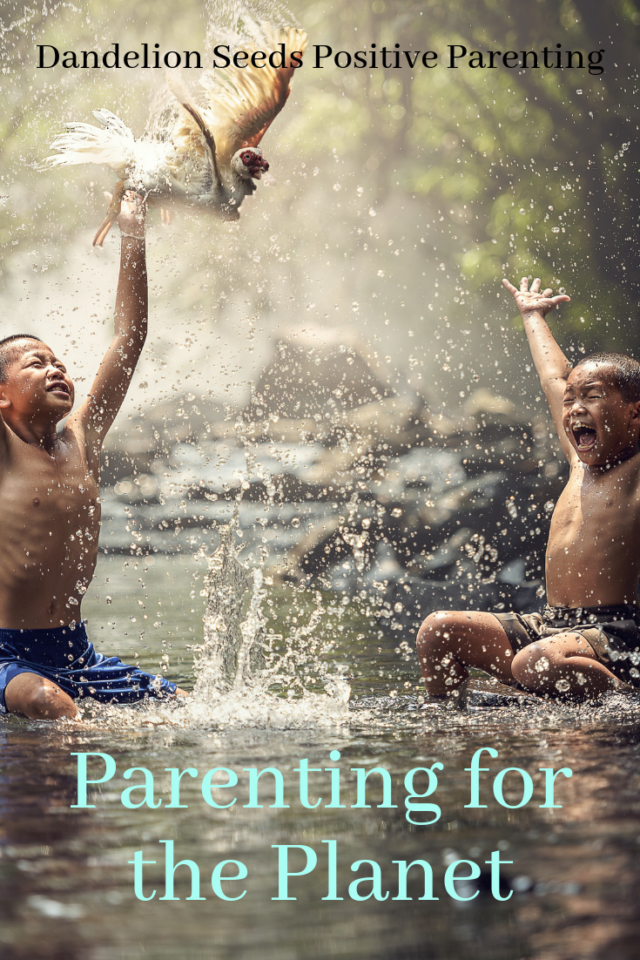
We shouldn't just teach kids about the implications of deforestation or melting ice caps, of course ---rather, they need to know about all the myriad factors that play into the future of this "pale blue dot" we call home.
However, it feels a bit overwhelming to have that responsibility on our shoulders, doesn't it?
It is overwhelming to protect the Earth, much less teach little kids about it. I'm not minimizing the enormity of the task. Fortunately, as individuals, we're not supposed to carry heavy burdens alone---especially seemingly insurmountable ones like climate change. Positively altering our world is going to take work from every single one of us as a global community. What matters is that we're doing our part.
There's always something we can do to protect the Earth. Here are three ways that work well as we parent our children: Teach Them, Show Them, and Lead Them.
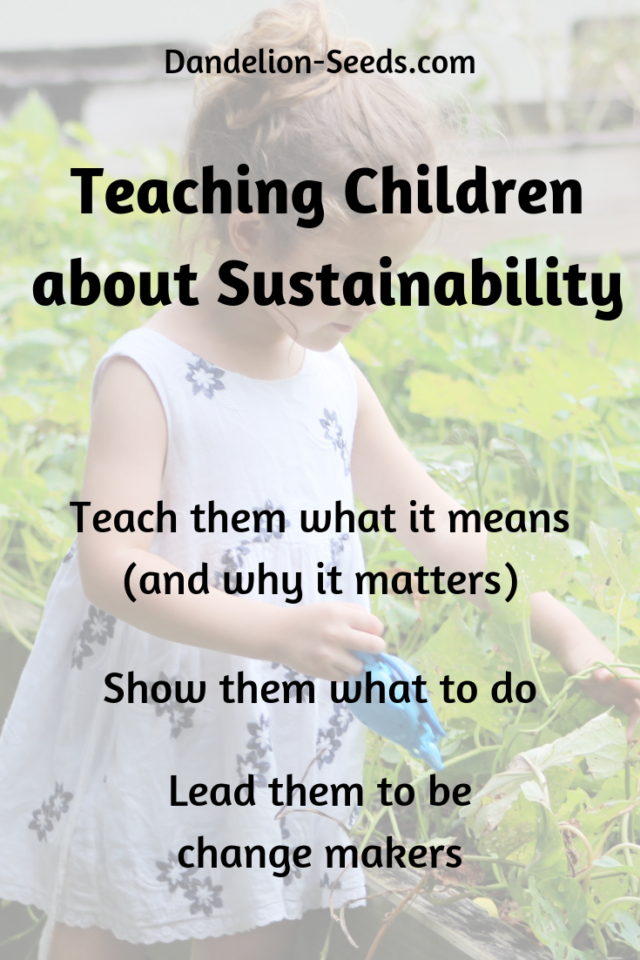
In addition to modeling for your kids all the ways you protect the Earth, challenge them to find ways to be change makers themselves. See what they come up with. Here are a few examples:
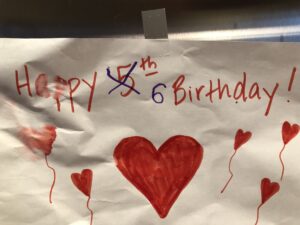
birthday streamers or decorations, wrapping paper or ribbons, take a single "day in the life" and see what you can reuse again another day. I never realized that I'd inherit my great grandmother's habit of saying, "Don't tear the wrapping paper---we'll use it again next year!"---but here I am. (I plan to phase out wrapping paper entirely once what we've been reusing no longer holds together.) Encourage your children to challenge their friends to nix single use items in their homes, too. Frame it as an ongoing scavenger hunt. Every day holds opportunities to rethink that which we used to consider disposable.

Solar panels and electric cars aren't feasible for everyone, and we can't always choose whether our homes are powered by wind turbines. However, until more of those things are commonplace, you can write letters with your children. Make phone calls. Model to your children that communication matters---because their future on this planet matters.
There are so many ways to weave this topic into your daily conversations. Although it's wonderful to have sit-down discussions about how to protect the Earth, it doesn't need to be complicated or heavy-handed, particularly with children who are highly sensitive. Adapt your message to suit your child's ability to process the information thoughtfully and without fear mongering. Starting small is great, particularly for small children. No child is too young to listen. It's all about planting the proverbial seed. It will grow if you let it.
Awareness and understanding go a long way; they're how kids establish their belief systems about what's important.
Here are some simple and effective ways you can teach young children about how to protect the Earth:
What you can say to your child: "I'm turning off the bedroom lights because no one's in there. That's how we save energy. Saving energy helps protect the Earth and everyone who lives on it."
 items to break down. A single plastic bag can take anywhere from 10-1000 years; some studies argue that they never fully decompose. What else can you research together?
items to break down. A single plastic bag can take anywhere from 10-1000 years; some studies argue that they never fully decompose. What else can you research together?What you can say to your child: "We're walking to the library today so we don't use the fuel that's in our car. Saving fuel helps protect the Earth by reducing fumes and protecting the planet's natural resources."
Talking goes a long way for kids. If they don't hear important messages from you, what would they know to look for (or to avoid) in society as they grow up?
It's important for kids to know that they're not too young to care; not too young to help.
Have you heard of Greta Thunberg, a 17-year-old girl from Sweden? She's a climate activist who's inspired marches for young people around the world. She completed an incredible 15-day, 3,000-mile (4,800km) voyage on a carbon-neutral boat across the Atlantic to bring awareness to climate change. She spoke at the United Nations Climate Summit in September 2019. Here's her very compelling speech to the Assemblée Nationale:
Greta's work is inspiring and wonderful, yet she's not the only one who's doing good work to protect the Earth. Young activists are doing important climate work all over the world. Share their stories with your children.
Watch your children's reactions to others' work to learn which elements of protecting our planet speak to their hearts. Then, foster those things. Do they love marine animals? What about their favorite forest creatures? Do your kids enjoy hiking, playing outside in good weather, or boating with Grandpa? See what other people are doing to make enjoying those things possible for your child. Tie those things into your discussions. They're specific. They're memorable.
As with all topics, you'll be more likely to succeed at teaching your message about sustainability if your child feels emotionally compelled to learn. Just like some kids enjoy math for the sake of numbers and others don't care about math until they discover physics, pay attention to what resonates with your child. Show them what others are doing in an area that inspires them. Read books together about ways your children can help protect the Earth (afflinks). Check them out from your local library if you can.
Be it a cigarette butt on the pavement, smoke spewing from a manufacturing facility, or someone acting irresponsibly towards our planet in any way, it's perfectly okay to point it out and say, "Yuck." Explain why it's off-putting.
What you can say to your child: "I don't like it when people leave their trash near the lake. It's dirty and can make the fish and animals here very sick. I want people to do better." Bonus points: pick up the trash and take it to the nearest bin. Pack an eco-friendly hand sanitizer to keep with you if you're concerned about cleanliness.
Kids need to know that adults outside your home care about sustainability, too---lest they feel as overwhelmed as we do. It's hard to feel like an activist in isolation. Show them they're not alone. Find role models they admire (famous or not) and share with them what those people are doing.
Raffi, the beloved children's troubadour and creator of his namesake Foundation for Child Honouring, wrote two wonderful new songs about the climate emergency ("Young People Marching – for Greta Thunberg" and "Do We Love Enough"). Here's his press release. You can stream the songs from here.
I'd love to say "Show kids that we've got this." Although I can't do that, I'll write, "Show them that we're working on it."
The normal order of things is for them to outlive us on a safe and healthy planet.
We can't force kids to be stewards of the Earth; it's our job as conscious parents to model these things for them. They'll follow our lead. As a bonus, the more you instill your messages in your kids, the more they'll hold you accountable, too. Your actions will become their actions as they grow up. They're paying attention now.
"Another day is imminent. Another world is possible." -- Raffi Cavoukian
Sarah R. Moore is an internationally published writer and the founder of Dandelion Seeds Positive Parenting. You can follow her on Facebook, Pinterest, and Instagram. She’s currently worldschooling her family. Her glass is half full.
"Today is my birthday," Jenny* whispered in a class I help teach, clearly feeling proud. I asked if it would be alright if the class sang her the "happy birthday" song, and she nodded eagerly. So, wanting to help this child feel happy, loved, and valued everywhere she went that day, we gave her lots of attention, which she gleefully accepted.
A few minutes into the class, I inquired, "So, how old are you today?" She responded with all the confidence in the world, "I think I'm about five and a half!"
Her response made me laugh.
And then, I confess that a small part of me was tempted to renege on the celebrating.
Catching myself in my "over-adulting," though, I think she was doing exactly what many of us should embrace: celebrating life, just for the heck of it. So, on we went, celebrating her special "five and a half-ish" birthday, just as it was.
"I'm so glad you're here," we said.
"It's really fun to dance with you," we informed.
I sensed nothing manipulative in her motives. She just wanted to feel some impromptu joy, so she created it. And we followed her lead. What makes a child feel happy is knowing he or she is important.
Happy kids not only feel better, but studies show that they also do better academically and otherwise. So we, as adults, have plenty of motivation to help them feel comfortable and joyful. To be clear, I don't believe anyone can "make" anyone else happy. However, there are many tangible things the adults in their lives can do to help kids feel happy, loved, and valued. Here are four of my favorites.
This is different from you loving them; it's helping them feel it in the ways they uniquely need according to their (not your) love language. It's the way they can best understand the strength of your love: your knowing what makes this specific child happy. This insightful book outlines five love languages, including gifts, acts of service, touch, quality time, and words of affirmation.
Even if their love language is "gifts," research shows that giving to others reaps greater rewards, even for young children. So, use the power of this knowledge wisely, if that's their love language. Whatever their love language is, though, be aware that it might differ from yours. It might take some practice to express love differently for their benefit. What makes a child happy is feeling loved in the ways that speak to their unique heart.
While raising happy children is a priority for parents, it's easy to get caught up in the day-to-day tasks we need to accomplish as responsible adults. Particularly if your child's love language is quality time, involve them in not only the "big things," but also in the little daily events, mundane as they may seem. Even better, combine the power of touch with quality time. I've unloaded the dishwasher with my five-year-old on my hip more times than I can count. (She's nearly half my weight, so it's good exercise, too!) I make eye contact with her and smile, then hand her the dishes that go where she can't normally reach. She puts them in their proper places, happy to connect in the ordinary necessities of life.
We can help kids feel important by involving them in the things that may not matter much to us, but still allow us to connect.
Here, you can cover a lot of happiness bases at once. Find good quality books that not only help children learn about age-appropriate topics, but that also promote joy and a growth mindset. Awhile back, I posted a list of my favorite books to help kids build self-esteem and confidence. However, as I wrote then and I'll state again, the messages "sink in" a lot better if you don't just read the books, but also discuss them with your children. What traits do you see in the characters that your kids do well? Tell them. What helps kids feel important is knowing for sure that you "see" them along with their strengths.
Most kids enjoy when family members read them books, regardless. One part of the kids' enjoyment may be that books can touch on, well, touch (no pun intended). Time on your lap or sitting shoulder-to-shoulder offers physical connection, if that's your child's love language. The words you use when discussing the books easily lend themselves to words of affirmation. Reading together is definitely quality time, and that naturally helps kids feel happy. Even older kids benefit from reading aloud together. I have loving memories of my Mom reading the Nancy Drew series to me long after I could read alone. Her spending time doing something with me that I could do alone, helped me feel important to her.
Every day before bedtime, I ask my daughter three questions that I didn't invent, but that give me helpful insight:
Knowing I'll ask those questions every evening, I'm intentional about making her laugh. I listen to what was hardest and empathize, and I take note of what she enjoyed most so that we can replicate it. Replicating those moments of happiness--not exactly as they happened, but in familiar ways--keeps joy on the forefront of our minds, as well as in our activities. Part of fostering positive child development is knowing the child in front of me.
Oftentimes, it isn't the "big" events that stick out for her. What she cites most often are times she felt emotionally connected, no matter where we were.
Positive parenting helps promote your child's trust in your unconditional love. Connect through dedicated special time together and really "see" your child. Modeling genuine happiness helps, too; studies show that we benefit from observing the habits of happy people of all ages. And that might just mean throwing an impromptu "five and half-ish" birthday party because, well, why not?
I was always a highly introverted child. It showed. For instance, when I was in high school, I learned that for my dance group's upcoming graduation dinner, the other dancers selected me to receive the spoof award for being the "Most Reserved." Knowing how much I despised being called by a "label" like this one, my Mom suggested that I tape a sign that read "I AM NOT SHY" to the back of my underwear. She said that when I walked up to receive the award, I should moon everyone with my, ahem, (not shy side). Although I appreciated her sentiment, I did not take that advice.
Fortunately, the award never happened, but the message to me was clear. I'd known since I was little that I was simply wired differently from some of the louder kids. And being the good parent that she was, my Mom supported me in that.
In general, the mainstream society in which I live views a gregarious extrovert as socially "good," whereas quiet seems to imply some kind of problem. It isn't a problem at all, of course. Well-meaning adults often pursue introverted children who aren't quick to respond with a sweetly teasing inquiry of "Oh, are you shy?" No matter how good-natured the intention, a child can perceive this as, "You, little human, are not okay as you are." Let's fix that.
In truth, the child may not be shy at all. He may just be an observer who wants to find acceptance in the world. We all want that acceptance. Splitting hairs? Nah. For some, it’s actually quite different, and both can be completely developmentally normal. There's a difference between lacking confidence and being an observer who's sure of oneself. Some kids just prefer to enter the pool through the shallow end, so to speak.
Going slowly gives introverted kids the information they need to feel comfortable in new situations. Regardless of your child’s confidence, it's important for an extrovert who might not share the same "wiring" to understand that the seemingly innocent question about shyness can embarrass or cause pain for some introverted children. Talking with someone who's not a parent, sibling, or close friend might be a completely different experience for that child than it is for someone else.
No, it's not. Shy is a feeling alongside a behavior, as in "I felt shy and hid behind my mom when everyone in the room looked at me." Introverted simply means that someone feels recharged after being able to spend time alone, sometimes with a small group of close friends. Spending time with large groups of people can feel emotionally draining. It's usually temporary and is not a reflection of the child overall. Conversely, extroversion means that someone gets his or her "energy" from being around other people.
It's more about the types of interactions that deplete or invigorate us than it is about how we act in any single situation.
No, it's not. Introverted children are not always highly sensitive, nor is extroversion a trait of lack of sensitivity. Plenty of highly sensitive children like to spend time with others and get a lot of energy from being around others. The behavior of highly sensitive children varies considerably from child to child. That said, according to Dr. Elaine Aron, 70% of highly sensitive children (HSCs) are also introverts, so there's a lot of crossover.
Here are some ways you can support them "in the moment."

To you, it might just be another kid's birthday party. To your child, it might be "a place where people I don't know look at me and adults try to talk to me, and noisy kids are everywhere." Rather than telling your child what others expect of him (which she can perceive as pressure), state just the facts and describe what your child is likely to see there. Then, remind your child that you (or another trusted adult) will be with him the whole time. Finally, agree on a script of what he can say if he needs support. If talking to another adult without your involvement is tricky for your child, consider giving him a small "help card" to show that adult, instead.
If you're staying present with your child, try this.
If someone does say something to your child, then ask your child something like this (within earshot of that person): "Would you like to respond, or shall I tell them you prefer to observe?" There are lots of variations you can try here. Now that I have an introverted child of my own, I've had lots of opportunities to practice with her. Once we graduated from this question, we moved onto, "Would you prefer to say 'hi' or wave?"
Remember the importance of your loving, supportive touch along the way. Introverted children need their parents to follow their lead and reassure them in verbal and non-verbal ways. Your positive support will make the experience less hard, and much more positive, for them.
It's fine to encourage without pressuring. One helpful hint is to wait just past where you're comfortable and give your child enough time to respond. Sometimes it just takes a moment; release your expectations that they won't do it. Maybe they will!
Here's how:
If she chooses not to engage with someone who's talking to her, simply tell the other person: "She prefers to observe until she knows people better."
It's sometimes tempting to overcompensate for child who isn't responding to another adult (or child). If you apologize for your child's lack of response, it might placate the other person, but it sends the message to your child that he's done something wrong. Of course that's not your intention!
What should you do instead if your child isn't responding? Simply smile at the other party and continue the conversation normally. It sends that person AND your child the message that this is no big deal. That's great for your child's comfort level and self-esteem. We all feel more compelled to engage when we lack pressure to do so.
"Shy" and all its word-cousins have a stigma in the culture where I live, although they shouldn't. In many countries, it's actually perceived as rude if an extroverted someone is too over-the-top with energy (and words). In my home, we've banished all references to shy, reserved, and similar; instead, if we use any label at all (and we try to avoid them), we use it only as a verb. With child-first language, we say, "My child prefers to observe." I want to raise her knowing that labels don't define her. She's not my "shy child." She's my child.
It's helpful to listen to your children and seek understanding of what resonates with them. Every child's personality and preferences are different.
Spend time talking about a time you preferred to observe as a child. Introverted children love hearing that others have felt the same way they do. Even if you were usually the life of the party, you likely remember a time that you didn't want to be in the middle of the action. Present it as a positive; it's affirmation that your child is perfectly okay just as he or she is. Your child will flourish best when he or she feels like you "get" it. If you worked through a tricky situation, tell your kid how you did it. Explain your own strategies that have worked (while framing introversion in a positive light).
You know your child best. What kind of stimulation does he or she enjoy? Watch them for cues without projecting your own experience, or that which you've seen the media say is "normal." Are your kids happy spending time in simple play with family, or do they require many activities throughout the day with a large amount of socializing? If you contact your child's teacher with questions about how they learn best in class---in groups or individually---that can be a clue, too. If need be, rule out anxiety disorders that may be affecting your child's social-emotional comfort.
Quiet or not, you're raising a person who will look to you for validation that he or she is "good enough" for the world. There's a lot of pressure out there. And you, dear parents, when you support your children just as they are, are doing them a wonderful and necessary service.
If you don't have an introverted child, the best thing you can do is let the quiet ones be, without judgment or comment. The world needs all of us.
_____________________________________________________________
(Amazon afflinks): These books by Susan Cain and others helped me understand many introverted kids better than any others I've found; I highly recommend them. If you are, or know, an introverted or sensitive adult, they provide fantastic insight.
Most kids have inherently good negotiation skills. Pull out a chocolate bar and tell kids to divide it up for themselves, and you'll find quick proof of that. When it comes to conflict resolution and self-regulation, however, many adults wonder whether children possess the emotional intelligence and executive functioning skills to navigate that territory. As a result, many grown-ups are quick to intervene and solve social problems for them. After all, emotions are tricky even for us to manage, so it's tempting to guide our kids when we sense trouble. I know because I've done it.
I'll share an example of how much better it can work when kids figure out how to resolve conflict for themselves, however. When I was in a play-based science class with a group of four- to six-year-olds last week, they made "squishy circuits," where they connected two sets of wires, Play Dough, and mini-lightbulbs to the positive and negative ends of batteries in a particular sequence. If they connected everything correctly, the lightbulbs would light up.
Adults were there to help ensure the kids' safety, of course. (Personally, I'm thankful for observing Teacher Tom in action at another school I visit weekly. He's a world renowned teacher at a play-based preschool in Seattle. He's helped me chill considerably about what I consider dangerous for kids, and he facilitates conflict resolution better than any teacher I've ever seen.)
Once the kids got the hang of basic circuitry, they could get as creative as they wanted with their Play Dough inventions. One five-year-old girl who I'll call Catherine, who regularly displays high emotional intelligence and emotional self regulation, announced that she was going to use her Play Dough to make a kitty with a water bowl. Often demonstrating strong executive functioning skills, she's a "stick to the plan" kind of kid. (Executive functioning includes things like self-control, planning, and the ability to remember instructions. If you're looking for a deeper understanding of executive functioning and self-regulation, this article from Harvard's Center for the Developing Child describes them well.) So, she set to work right away while most of the other kids rolled their materials around haphazardly, deciding what to make.
After about 10 minutes, the girl next to Catherine, another five-year-old I'll call Mia, reached over and demolished Catherine's kitty. I've observed that Mia sometimes lacks the executive function skills to self-regulate. Looking flabbergasted, Catherine called me over to help resolve the conflict, announcing matter-of-factly what Mia had done. It was obvious. Catherine's blue Play Dough that Mia squashed was still in the center of Mia's palm. Mia had been using green.
Before I could say a word, Mia announced loudly, "I didn't do anything wrong!"
I felt tempted to call Mia out on her transgression and show my frustration. My first impulse was to ask her what the heck she was thinking. (I'm still learning and have to catch myself, too.) However, I know an objective tone is more helpful for encouraging honest dialogue. So, I took a breath and stated neutrally to both of them, "It sounds like something happened here." Mia has older siblings at home, and I know she's no stranger to managing conflict situations. I can't say with certainty, however, where she is on developing her executive functioning skills.
Dealing with conflict is a hard life skill to learn, because frankly, negative emotions are hard. I'm an adult and I still don't like conflict. We're not "wired" to like it. However, the ability to recognize someone else's point of view goes a long way toward developing emotional intelligence and self-regulation.
So, I continued.
Me, in a curious and non-accusatory tone: "Mia, I observe blue Play Dough in your hands. I'm feeling curious about that."
Mia: "Well, I did squash her kitty, but she had just started working on it. She didn't care."
Catherine: "I didn't just start working on it. I had been working on it the whole time! It was important to me."
Me: "Hmmm. Catherine, I hear you saying that it was important to you."
Being an active listener, including playing back what you've heard, is a key ingredient in helping kids resolve conflicts. It shows that you're internalizing what they said, and essentially invites them to continue while feeling supported. Accusation is counterproductive; only when kids feel supported can they grow their emotional intelligence effectively.
And as is true with many things, when it comes to engaging in kids' conflicts, less is more. Less adult talking is more beneficial to kids learning to solve problems on their own. When they feel capable of doing that, it reinforces growth in the self-regulation and executive functioning parts of their brains.
Catherine and Mia continued without prompting.
Catherine, addressing me: "I really didn't feel so happy when she did that."
Mia, to Catherine: "No, you were happy."
Catherine: "No, I really didn't feel so happy when you did that."
Mia: "Oh." Mia's eyes went downcast then with apparent remorse, and perhaps with understanding the deeper connection between emotions and behavior.
At that point, they sat together silently, in what seemed to be somewhere between an impasse and emotional connection. I paused for long enough that I was sure each had finished saying her piece. When neither continued, I suggested next steps without solving anything for them, similar to creating a negotiated agreement in a boardroom.
Me: "I'm going to guess that nobody in the room likes getting their Play Dough squashed. I'm wondering if that's true."
Both girls, agreeing: "Yeah. No one should squash Play Dough."
Me: "Okay, then. I think you've solved a problem. Since no one likes getting their stuff squashed, I wonder if we can agree not to squash anyone else's stuff, either." (I essentially played back the solution they'd reached, just broadening it slightly.)
Both girls, nodding vigorously: "Yeah. Let's do that. No squashing people's stuff!" I could almost see the self-regulation synapses connecting in Mia's brain. Moreover, Catherine's emotional intelligence was growing by having expressed her frustration in an appropriate way. She felt "heard" and could move on. Her emotions had no reason to escalate. Executive functioning in action.
All of us: Exhale. Resolution. Consensus.
Both girls seemed resolved in the matter. Their conflict was now water under the bridge. They moved forward happily with their projects.
I fully trust that their self-identified conflict resolution did far more for their executive functioning skills than any punishment or forced apology could have.
And the sooner we let them try, the better. Studies show that practice between the ages of three and five is particularly beneficial. This is also the age that their working memory develops in leaps and bounds, so that they'll have specific experiences upon which to draw as they get older. Areas of the brain that develop during this timeframe are profound and substantially important for future interactions. Some would argue that the ability to self regulate and strong emotional intelligence skills matter far more than IQ alone.
Socially skilled kids can focus attention on managing conflict and growing their relationships with peers. It's possible because they already have the emotional intelligence and self-regulation tools in place to do those things. Conversely, those with executive functioning issues need more practice. The adults in their lives will support them best by resisting the urge to dive in and rescue them when they see any type of conflict; but rather, by letting them attempt their own conflict resolution, even if they get it wrong. Practice makes perfect, right? Our presence is beneficial and sometimes necessary, but our words should be few.
Maybe emotions are tricky for adults to manage because some of us didn't get enough practice when we were kids. I don't know. What I do know anecdotally, however, is that emotionally intelligent kids usually grow up to be emotionally intelligent people (adult-sized, because, of course, kids are people, too). The ability to understand and manage emotions, resolve conflict, and display emotional intelligence is a lifelong gift to ourselves and those around us.
_____________________________________________________________
Follow Dandelion Seeds Positive Parenting and Dandelion Seeds Positive Wellness on Facebook. We’re also on Instagram at DandelionSeedsPositiveLiving.
We appreciate your support! Click here to see all the children’s books, parenting books, toys and games, travel necessities, holiday fun, and wellness-related items that we’ve used and loved. As an Amazon Associate, I earn from qualifying purchases. However, pricing (including sale prices) and shipping are still from Amazon. Once you click the checkout button from your Dandelion Seeds cart, it’ll direct you to Amazon to complete your purchase.
"Mommy, let's pretend this isn't a train tunnel."
"Okay, what is it?"
"It's a tomb."
Well, hello, conversation stopper. She paused for effect, which is a good thing, because I certainly didn't expect that. After a moment to process and very consciously trust that children's play serves an important purpose for them, I mentally cringed while inquiring, "Is anyone in there?"
"Yep, a dead person."
She smiled lovingly at me, just content to be playing.
I have to admit that this already wasn't my favorite game, and although I didn't know who was inside, I was hoping for some miraculous resurrection of sorts.
"Was it anyone we know?"
"Nope, it's not. It's just some man. He's dead in there."
Well, at least it's no imaginary person we know. Somehow that made it better for me, the adult who should be able to handle a child's imagination.
Still, I waited for the punchline and trusting her play, looking for some clue as to where this was going.
"What happened to him?" I asked tentatively.
"A cow sat on him. And then a car drove on top of the cow."
Well, that would certainly do it. Although she knows bodies stop working when someone dies, we haven't spent much time discussing the specific mechanics of the process.
Then, she added, "Yeah, he was really, really old, like Grandpa Herb."
Click. Now, I see what's happening. Grandpa Herb is actually my grandfather; her great grandfather. As I write this, he's a 95-year-old with a body that's more ready to go than his brain is.
I reminded her that Grandpa Herb is still alive, but she proceeded me to remind me that he's "really, really old and probably won't live much longer."
He might have another decade ahead of him, but he might not. She's bright enough (as kids are) to pick up on pieces of the adult conversations to know that we talk about his life and medical situations differently than we do others'.
Just like we do as adults, kids need to process when change is coming; especially when it's such an abstract concept as this (for all of us). We rarely discuss death with children unless it's necessary, so it's particularly foreign to them when it happens. We can read helpful books like this one and this one (afflinks) to help cover the bases. I can trust that her play is helping her process just as she needs to. And she can ask all the questions she wants to, and I'll do my best to answer them according to our belief system. Of course, I can't tell her what dying is like, though, because it's never happened to me.
So, until then, we find ways to make peace with the unknown. We need to somehow make the intangible, tangible. We need to know that when the time comes, we'll have done something to prepare, because we all want to do something.
Some might call this "game" macabre and make that resurrection manifest somehow, or insist that it's a train tunnel and nothing more. For us, it became a way to process and discuss one of life's Big Topics, using the means my child knows best: learning through play. It's within her power to play; the more she can process it in her own terms without me imposing my agenda on her, the more she can begin to grasp and reconcile the concept. And the more she can be ready for the inevitable, be it for Grandpa Herb or for a goldfish, the less jarring it will be for this child.
Personally, I'm going to beware of sitting cows for awhile. More than that, however, I'll continue to trust that play needs to happen, exactly as it is.
Knowing her grandparents will soon be asking for gift ideas for our daughter, my husband and I decided to take our five year old window shopping today. As usual and as I've written about before, we began with the caveat that although we wouldn't buy anything, we'd take pictures of what she likes so that we're sure to remember. This approach has pretty much been golden for us since she was two, and learning to delay gratification has contributed well to her growth mindset.
Today, however, she was really short on sleep. Even for me, an adult, a lack of sleep thwarts even the very best laid plans. Still, we pursued our endeavor to leave the house.
Upon entering the store, our child uncharacteristically said, "I've decided we're not just going to look at toys. We're going to buy some for me today to take home." I gently and clearly reminded her of our mission. And I hoped for the best.
We made it past the greeting card aisle and into the craft aisle. On display with the crafts, they were selling a sewing machine for kids. She picked it up and announced, "This is what we're buying for me today. Let's go check out now."
I wish I had a dime for every time I'd seen a parent in a similar predicament. I'd be able to buy a thousand sewing machines. Regardless, this was really unlike her.
I acknowledged how much she wanted it and reminded her that we'd put it on her list. I took a picture of it, and for good measure, so did my husband.
She announced that she would carry it through the store with us until it was time to check out, and then we'd buy it. I let her know that she'd be welcome to carry it through the store, but that we'd put it back on the shelf before leaving. Setting expectations upfront usually does wonders for keeping things mutually agreeable. However, the "mutually" wasn't happening here today. So, I presented it as a loving limit and took the time to discuss and validate how she felt.
Sure enough, she chose to carry it through the store, anyway. She had no interest in looking at any other toys. We stopped to look at some decorations and at a few items for my husband, but that was it. She wanted to go no farther, though, so we returned to the craft aisle, the sewing machine still firmly in her grip.
We had nowhere else to be, so we did a bit of emotion coaching to help her. However, it was still a no-go for her. She said she'd wait there "forever" until we bought it. Taking it from her forcefully would do nothing for her emotional intelligence, our connection, or her growth mindset. So we waited, letting her feelings be what they were, and trusting that this was temporary.
After awhile, I asked her to think of a way she'd be willing to leave it at the store. Because she wasn't in an emotional place to think logically right then, I offered her the options of either putting it back right away or walking toward the exit while she held onto it, until we reached the checkout area. At that point, her option would be to hand it to my husband to put back before we reached the door. She chose the latter. And for whatever reason, she quickly put the sewing machine back on the shelf where it belonged. However, she grabbed a unicorn craft that was nearby and held onto it just as steadfastly.
However, near the checkout area, she changed her mind and wouldn't relinquish it. At that point, I shared a story with her about a time when I was little and didn't get a toy I wanted. Her demeanor changed. She softened. For the first time in awhile, she looked me in the eyes and connected. She felt understood.
Shortly thereafter, she offered, "I don't want to put it back on the shelf. I want to put it somewhere...else."
I replied, "It's too hard to take it back to the craft aisle. You want to put it somewhere different."
"Yes. I want to hide it and see if Daddy can find it."
Fortunately, because she's five, her hiding places often include instructions such as, "Please don't look behind the chair."
She looked resolved, proud of having solved the problem herself. All she needed was the time and emotional support to do it. So, off we set on a short mission to find the perfect hiding place for it. After testing a few options, she settled on setting it between the feet of a mannequin. She promptly informed her Daddy not to look there. (Daddy, of course, returned it to its proper place once we were out of sight, and she confirmed later that it was exactly what she'd wanted him to do.)
And off we went to the car; her, sad but accepting, growing in her ability to solve problems. Even among the shiny objects; even when sleep deprived, she found a way to do it that was mutually agreeable. We can both sleep well tonight.
At one of the schools I have the pleasure of visiting regularly, this week's craft table featured what the teacher appropriately called the "paper guillotine," along with some glue and paper. At one point, an unsuspecting adult walked over and saw the setup. She inquired, only half-jokingly, "Oh, is this the table where you slice off your finger and then glue it right back on?" I laughed, albeit a little nervously. I admit I wondered the same thing when I first saw the guillotine. These are four- and five-year-olds using a very sharp tool, after all. However, I trust the kids' teacher implicitly, so if the paper guillotine is out, we go with it (with appropriate supervision).
Every week, I hear adults guide children as well as they can to help ensure their safety and well-being. What troubles me, though, is that despite their unquestionably good intentions, I all too often hear the adults telling the kids what not to do, without further comment or guidance. With all the time I spend in child-focused settings (schools and otherwise), I often get firsthand insight into the kids' experiences.
The "nots" and "don'ts" serve a valid purpose in our adult brains. They convey to our kids what they aren't supposed to do. They also leave me feeling really, well, deflated at the end of the day. And the adults aren't correcting me. They're correcting the kids. What's intended as helpful correction sometimes comes across as criticism and disapproval, and the kids' self-confidence simply can't thrive in that environment.*
To be sure, kids need guidance. They need discipline in the sense of "teaching," along with clear boundaries. And they need support while they figure out what we adults expect of them. Janet Lansbury, early childhood expert, writes extensively about the different forms boundaries take and how to navigate them with your kids, while building their self-confidence. Although she often writes about toddlers, the concepts she unpacked for me in this life-changing book still apply long after toddlerhood (afflinks). This is another great book that's full of practical suggestions and real-life scenarios.
That said, the tricky part is that just by virtue of being kids, they're, um, new here. To Earth. Their brains are still figuring out all sorts of things the rest of us have known for awhile. And in their defense, while many of them can and do understand what not to do, they still need help connecting the dots to what they should do, instead. Even school-age children have only been in school for a short time, and they're still figuring out how the rules and communication styles differ from person to person; classroom to classroom.
And in almost all the places where I see adults (both teachers and parents) interacting with children, I see all sorts of completely avoidable emotional strife. If we adults tweak our approach just a bit, it can remove any doubt in the child's mind about what we really want from them, while helping grow their self-confidence. We can make life easier for them and for ourselves. Who wants unnecessary conflict, anyway?
Here's what I've seen some of the best adult-leaders (teachers and parents) do that works beautifully. As the mother of my own child, I'm trying to emulate these concepts.
Every time you feel a "don't" or a "stop" message about to come out of your mouth, replace it with the opposite, positive statement. Rather than "Don't push," try, "Please keep your hands to yourself." If it helps you practice until it comes naturally, you can add the "do." Example: "Please do keep your hands to yourself." Instead of, "Stop throwing papers on the floor," try, "Please keep papers on the table." "Please walk" is just as easy to say as "Don't run," but the emotional tone is much more empowering. The child will know exactly what to do.
It's amazing how much less defensively kids (and, ahem, adults) respond when they're given positive instructions rather than directives that imply they're about to misbehave, even when they're doing everything right. From what I've witnessed, it makes a huge difference in the tone of the room, be it a classroom or at home.
A common pitfall I observe is when adults get the positive wording right, but then they attach a threat or consequence to it. For example, "Keep the crayons in the box or I'll have to take them away." Unfortunately, this approach strengthens kids' self-confidence no better than negative instructions do. Both activate the same part of the brain that signals danger, and it's hard to thrive that way. An example of what would convey the same message without the threat would be, "The crayons are for later, so please leave them in the box. First, it's time for a story."
I love it when I hear an adult call out kids who are doing something right. The catch here is to avoid indirectly shaming the kids who aren't doing it right, but rather, to build trust that we see kids in all their goodness. I love hearing, "Hey, I noticed how everyone in the class was quiet while I was explaining our activity today. I really appreciate that." Or, quietly to a child in the classroom, "Matty, I noticed you kept your hands to yourself today. Thanks for doing that." Alternatively, at home, "Thank you so much for cleaning up your spill without me asking you to do it! You sure do know how to help around here. I appreciate you."
I love how kids glow when they hear that they're getting things right.
In the class with the paper guillotine, what worked beautifully was this: "This tool is really sharp. The only thing that can go under the blade is paper. Keep your fingers out from under it when you push down on the lever." I'm happy to report that no fingers or other appendages became victims of the paper guillotine that day. All of the kids knew exactly what to do with the tool, because they'd been told what to do with it. We took the time to clearly and positively instruct them. Everyone who tried it appeared to find it fascinating, and dare I say, fun. Every single one of the kids went in giving the machine the side-eye, but knowing what to do, their self-confidence grew when it worked.
Raising our own children can be a lot like that: seemingly kind of scary at first, but when everyone figures out what to do, life can really go quite smoothly. The more we practice positive parenting, the more our confidence in the process can grow. And with peaceful smiles on our faces, we'll watch our kids' self-confidence soar.
________________________________________________________________________
*Source: https://www.psychologytoday.com/us/blog/compassion-matters/201106/your-child-s-self-esteem-starts-you